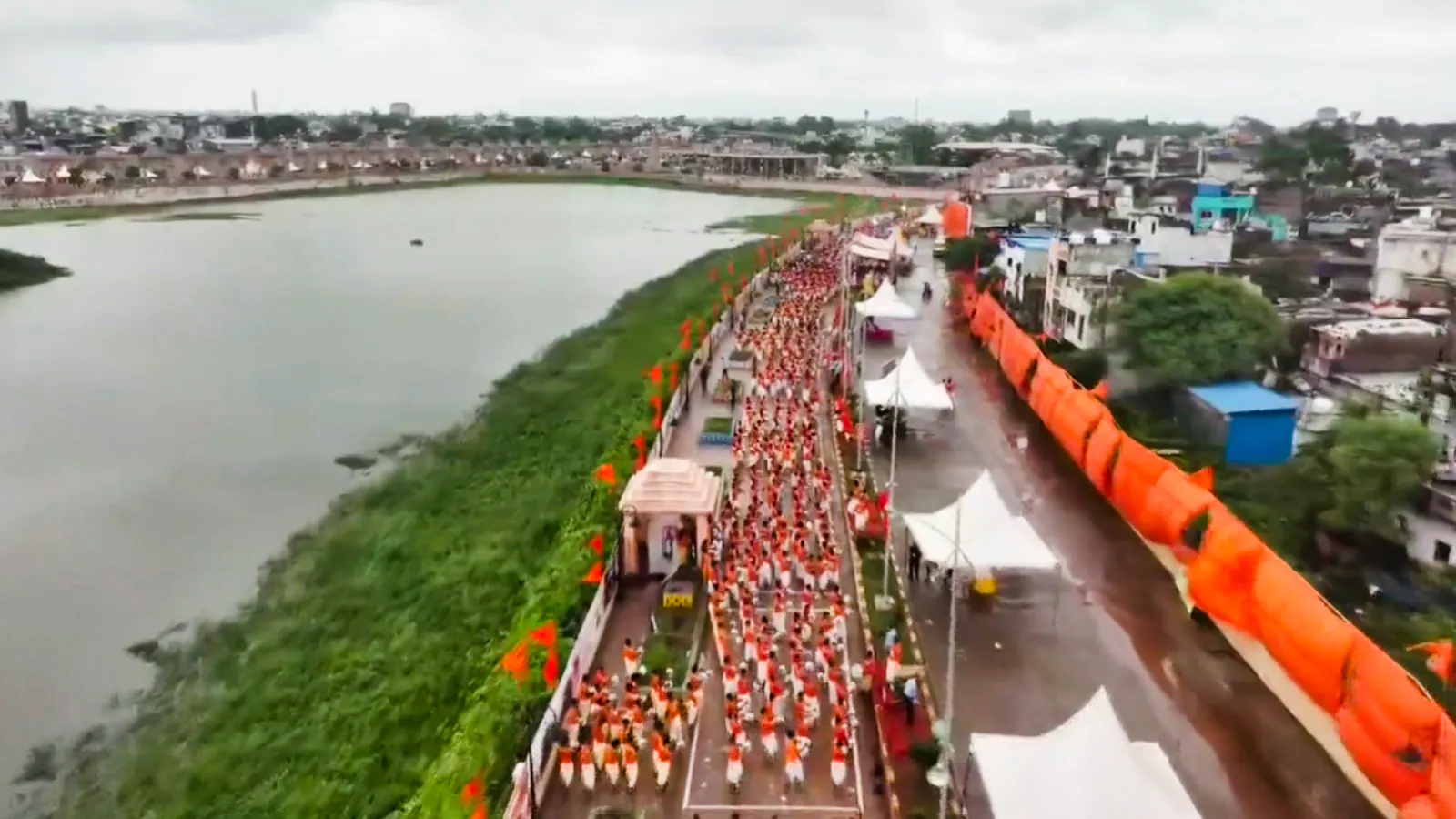Copyright news18

India’s cities stand at a decisive turning point. Expressways, airports, spiritual corridors, riverfronts, and industrial parks are not just redrawing maps — they are reprogramming urban metabolism. Each new project floods a city with people, money, and ideas, testing its ability to absorb change. Yet not all cities rise equally to the occasion. Some convert these inflows into long-term prosperity; others struggle with congestion, overpricing, and civic fatigue. The difference is not in budgets, but in what might be called a city’s Urban Intelligence Quotient (UIQ) — its capacity to learn, adapt, and innovate collectively. The UIQ describes how cities think. A city with a high UIQ perceives change early, processes it through collaboration, and responds in ways that create sustainable value. It treats growth as a learning loop, not a one-time event. Crucially, it includes government, entrepreneurs, and citizens — because no amount of planning can substitute for civic intelligence. Ujjain and the Shock of Success Ujjain in Madhya Pradesh is a striking example of a city experiencing this transformation in real time. When the Shri Mahakal Mahalok corridor was inaugurated in October 2022, it unleashed a wave of visitors rarely seen outside the Simhastha mela. Daily visitor numbers at the temple complex reached approximately one lakh on an average day and significantly more on weekends and holidays. In 2023 alone, Madhya Pradesh recorded over 112 million tourists, and Ujjain emerged as the state’s top destination with more than 52.8 million visitors — nearly half the total state footfall. This spiritual and economic influx created both opportunity and stress. An average pilgrim family spent between Rs 3,000 and Rs 10,000 during a visit — money flowing into lodging, food, transport, and local crafts. Yet, even as capital poured in, demand outpaced readiness. Sanitation systems, accommodation, roads, and parking were stretched thin. Homestays multiplied but many fell short of expectations; visitors complained about hygiene, safety, or comfort. Infrastructure expanded, but the social infrastructure — skills, standards, and civic ownership — struggled to keep pace. Three Years of Response — and a Long Way to Go It has taken three years for the city’s ecosystem to start absorbing the magnitude of its own success, and the process is far from complete. The visible changes — property prices, traffic, new hotels, and civic works — tell only part of the story. The deeper challenge lies in cultivating the learning layer: How citizens, businesses, and institutions internalise change, improve quality, and sustain excellence. To fully embrace the opportunity the Mahalok has brought, Ujjain must now move from reactive adaptation to proactive civic learning. Citizens, entrepreneurs, and community bodies need to see themselves not merely as beneficiaries of inflow but as co-authors of the visitor experience. The aim is not just to profit from pilgrims but to give them a reason to return — through hospitality, cleanliness, storytelling, and empathy. Many homestay owners, for example, entered the market with enthusiasm but limited exposure to standards in design, hygiene, or service. The way forward lies not in criticism but in co-creation: citizen groups, trade associations, and government agencies working together to set benchmarks, offer training, and curate quality experiences. Urban learning begins when opportunity is met with ownership. Understanding the Urban Intelligence Quotient UIQ reframes urban planning through systems thinking and complex adaptive systems theory. It measures how a city senses, coordinates, and evolves in response to shocks and opportunities across four key dimensions: Perception: How early a city detects new patterns such as rising visitor flows, land-use changes, or environmental stress and other necessary and important parameters Processing: How effectively information flows between government, business, and citizens to coordinate response. Response: How swiftly and inclusively the city acts — improving sanitation, mobility, housing, or service standards. Learning: How well lessons are institutionalised so that every new challenge strengthens resilience instead of exposing fragility. Applied to Ujjain, UIQ becomes a lens to evaluate and guide the city’s ongoing transformation. The next leap must involve not only expanding infrastructure but also improving knowledge responsiveness — the ability to capture feedback, integrate it into policy, and design participatory solutions. Citizens as the Neural Network of a City Cities are not managed; they are co-managed. Their intelligence resides as much in ordinary citizens as in planners or engineers. When a family converts its ancestral home into a certified homestay, when a group of youth volunteers help manage pilgrim queues, when local restaurateurs raise quality to meet national expectations — each act enhances the city’s cognitive capacity. These micro-behaviours form the neural network of urban intelligence. Without them, even the most sophisticated masterplan becomes brittle. A city’s true strength lies in its citizens’ ability to coordinate informally, adapt rapidly, and learn continuously. Ujjain’s path forward depends on embedding these qualities. The city could establish Civic Intelligence Partnerships — forums where municipal bodies, business associations, and citizen groups co-design initiatives: certification and mentorship for homestay owners, culinary excellence awards for F&B entrepreneurs, citizen-driven cleanliness scorecards, and open-data dashboards for transparency. Such mechanisms would turn civic pride into civic participation — the hallmark of a high-UIQ city. From Smart Cities to Wise Cities The first wave of “Smart Cities” in India invested heavily in sensors and surveillance, but information alone does not make a city intelligent. A truly wise city learns from feedback, adapts to complexity, and centres its intelligence in people. Ujjain already uses digital tools — AI-enabled crowd monitoring, facial recognition, and real-time mobility systems at Mahakal Mahalok. The next step is to link those insights to citizen action. Imagine a live dashboard showing tourist satisfaction or waste-management data, where citizen groups compete to improve their neighbourhood’s scores. That would make smart infrastructure truly participatory. Systems Thinking for Urban Futures Systems thinking views a city as a living organism — interdependent, self-adjusting, and non-linear. A new corridor does not just add space; it alters traffic, air quality, property values, and behaviour. Every intervention sends ripples through multiple systems. Ujjain illustrates this interplay vividly. The Mahakal Mahalok project transformed pilgrimage flows, real-estate markets, employment, and urban form — all at once. Recognising these feedback loops allows planners to anticipate unintended effects and design adaptive governance. Instead of chasing isolated targets, systems thinking helps align infrastructure, policy, and culture toward a coherent evolution. Building a Framework for UIQ For policymakers and urban planners, UIQ can evolve into a practical framework with measurable components: Cognitive Readiness Index: How fast local institutions and businesses sense and interpret shifts in demand. Collaborative Density Metric: The number and diversity of active partnerships between citizens, government, and enterprises. Adaptation Speed: The time it takes to translate public feedback into tangible policy or service improvements. Sustainability Feedback Loop: Whether environmental and social indicators are integrated into investment decisions. A structured UIQ dashboard could be piloted in Ujjain and later applied in other fast-growing cultural or tourism cities such as Ayodhya, Varanasi, Dwarka, or Rameswaram — all of which face similar patterns of inflow, aspiration, and strain. Ujjain as a Case Study for Others Ujjain is a living laboratory for urban learning. It has proven its power to attract inflows; now it must demonstrate its capacity to sustain them with quality, empathy, and innovation. The city’s next phase of development hinges on how well it institutionalises feedback — from visitors, residents, and businesses — into continuous improvement. Over the next few years, it could lead the way by: developing a visitor-experience index monitored quarterly. Introducing training programmes for homestay owners and food entrepreneurs. promoting student-citizen hackathons on waste and mobility. building partnerships with universities to study behavioural and economic patterns; and embedding systems-thinking training in civic administration. Such steps would make Ujjain not merely a destination, but a model of adaptive governance — a reference case for every Indian city navigating the tension between heritage and hyper-growth. Designing the Future, Not Just Managing It India’s urban transformation is irreversible, but its quality is still a choice. We can build cities that expand mechanically or evolve intelligently. The Urban Intelligence Quotient offers a framework to measure that evolution — integrating governance, entrepreneurship, citizen participation, and learning. Ujjain’s post-Mahalok journey demonstrates that opportunity alone is not destiny. The corridor brought crowds, capital, and visibility, but the next leap depends on the city’s capacity to learn — to translate inflow into insight, and activity into experience. When cities learn to think, they don’t just manage change — they design the future. Aditya Trivedi, Director, Rashtram School of Public Leadership, Rishihood University. Views expressed in the above piece are personal and solely those of the author. They do not necessarily reflect News18’s views.



